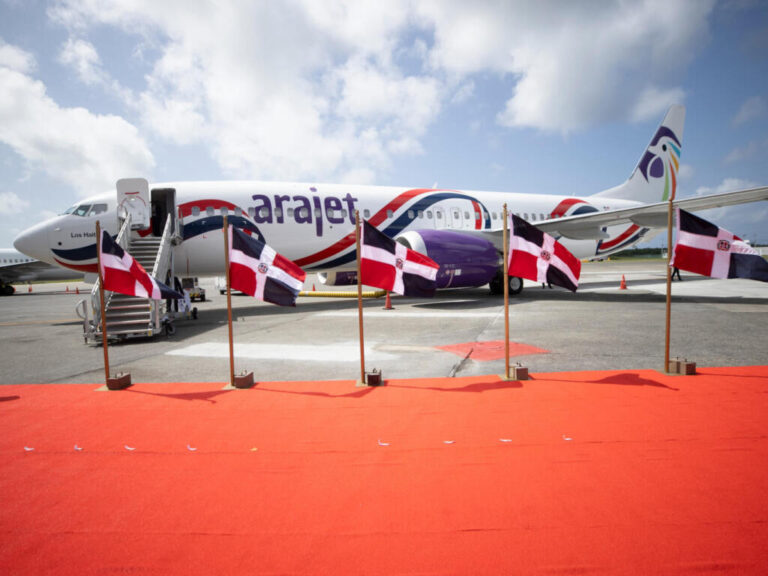The Central Bank forecasts that tourism revenue in 2023 will total US$9,200 million, a product of the arrival of about 10 million tourists, and US$4,000 million in foreign direct investment according to Central Bank governor, Hector Valdez Albizu.
The governor spoke at the 298th Meeting of the Central American Monetary Council (CMCA) held in Punta Cana, DR, on July 27th and 28th.
Valdez Albizu, who chaired the meeting, emphasized that some 5.4 million non-resident visitors arrived in the country in the first half of this year and that some 10 million visitors will have arrived by the end of 2023, generating approximately US$9,200 million this year.
He reported that the hotel, bar, and restaurant sector recorded a year-on-year growth of 12.9% in the January-May period, helping to mitigate the impact of the slowdown in other sectors.
As chairman of the CMCA, Valdez Albizu expressed the importance of these meetings, as they constitute an opportunity to exchange views on economic performance, future outlooks, and solutions to the challenges facing the region.
He also pointed out the complexity of the international context, characterized by the slowdown in global economic activity, the ongoing military conflict between Russia and Ukraine, as well as the trade tensions between China and the USA.
Dominican Economy
Valdez Albizu concluded the session on the macroeconomic context by highlighting that inflation in the Dominican economy has fallen sharply this year, dropping from 9.64% in April 2022 to 4.00% in June 2023, reaching the target of 4% ± 1% ahead of schedule.
He attributed this behavior to the effective monetary restriction measures in place since the end of 2021, and to the government subsidies aimed at mitigating the rise in commodity prices. He stressed that this behavior in inflation has allowed a reduction of 75 basic points in the monetary policy rate.
He indicated that in addition, the Monetary Board approved liquidity provision measures that have contributed to the acceleration of private credit and will facilitate the revitalization of economic activity in the future.
Foreign Investment
Valdez Albizu stressed that foreign direct investment exceeded US$ 2.150 billion in the first half of 2023, reflecting investors’ confidence in the fundamentals of the Dominican economy, and it is estimated that FDI would again be above US$4 billion by the end of the year.
He went on to explain that the central bank’s forecast models indicate that economic activity will continue to recover gradually, supported by monetary stimulus, the boost in tourism, and the acceleration of public investment, which he said could expand as much as 4% by the end of the year and close to its potential of 5% in 2024.
The Event
The meeting addressed various topics of interest to the Central American Monetary Council Secretariat (SECMCA), presented the implementation of the SECMCA Strategic Plan, the proposal for the Professional Visitor Program, the initiatives for regional harmonization projects, and the organization’s budgetary issues.
The space was used to make agreements on the integration of the payment system for the region’s countries, and the idea that all payment systems are open 24/7 was submitted for consideration. Likewise, the Dominican Central Bank committed to collaborating with the other central banks in the region in the development if their cybersecurity systems.
Governor Valdez Albizu was accompanied at the event by Clarissa De La Rocha, Lieutenant Governor; Joel Tejada Compres, Deputy Manager of Monetary, Exchange and Financial Policies; Fabiola Herrera, Deputy Manager of Systems and Technology Innovations; Julio Andujar Scheker, Economic Advisor to the Government; Joel Gonzalez, Director of the Monetary Programming and Economic Studies Department; Angel Gomez, Director of Payment Systems; and Brenda Villanueva de Cardoza, Director of the International Department.
The event brought together the central bank presidents Alvaro Gonzales Ricci of the Central Bank of Guatemala; Douglas Rodriguez Fuentes of El Salvador Central Reserve Bank; Roger Madrigal from the Central Bank of Costa Rica; Miguel Dario Ramos of the Central Bank of Honduras, while Ovidio Reyes Ramirez from the Central Bank of Nicaragua participated virtually.
Also participating were senior officials from the International Monetary Fund (IFM) Alfonso Bevilaqua, Executive Director of the IMF for Brazil, Cape Verde, Dominican Republic, Ecuador, Guyana, Haiti, Nicaragua, Panama, Suriname, Timor=Leste and Trinidad and Tobago; Alfonso Guerra de la Luna, IMF Executive Director for Mexico, Venezuela, Colombia, Costa Rica, El Salvador, Guatemala, Honduras and Spain; giving space to the member countries of the SMCA to voice their ideas and consult.
Source:

